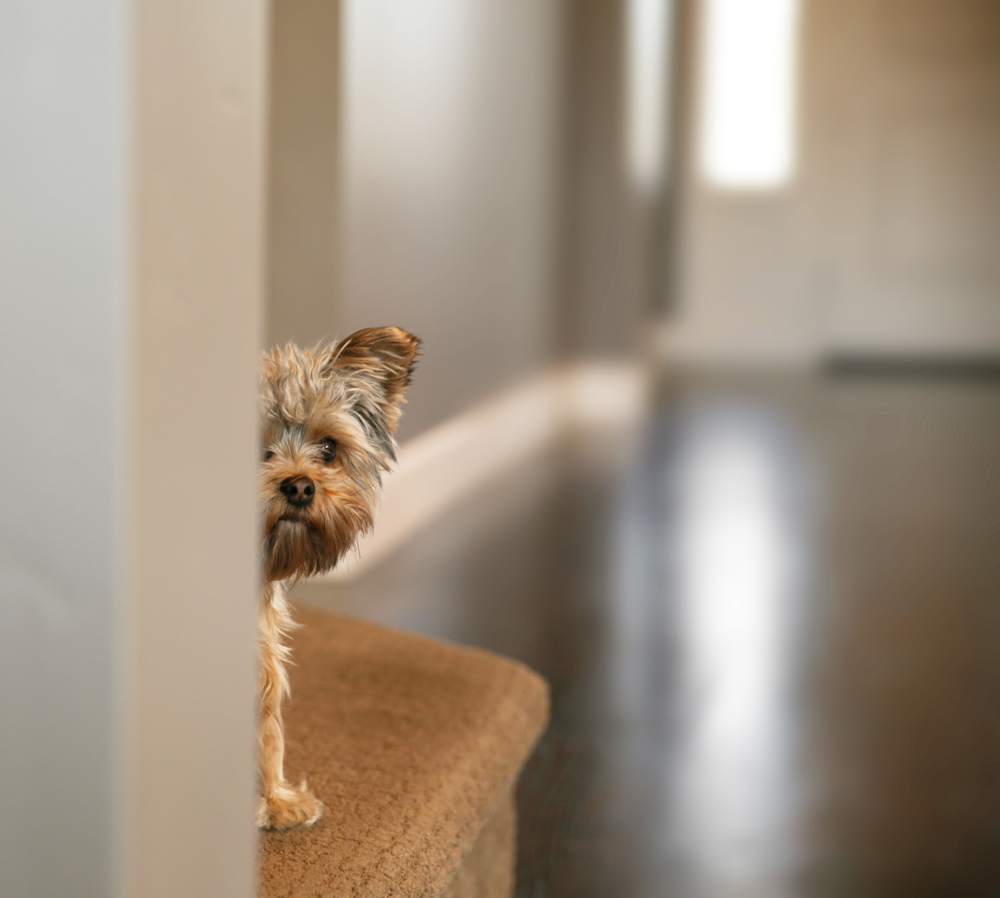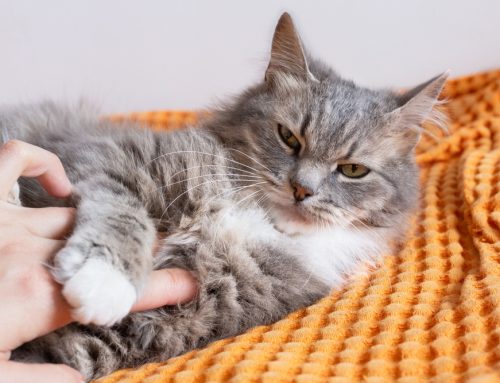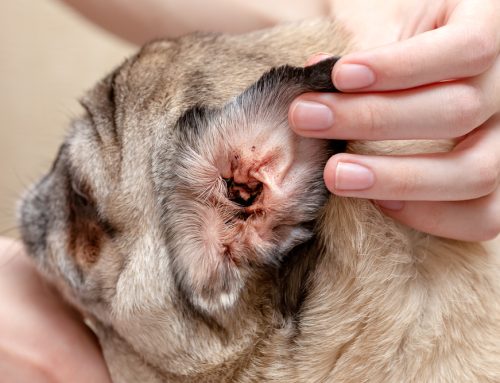Many dog owners consider their pet’s fear of loud noises, such as fireworks or thunderstorms, normal behavior. Although two-thirds of dogs react nervously to loud noises, this behavior is not only abnormal but also a treatable medical disorder. The Countryside Veterinary Hospital team is providing tips for managing your pet’s noise aversion and medical treatments that will reduce their panic. Thunderstorm and fireworks season is approaching, so we’re offering a noise phobia overview and how you can help your pet cope.
What is noise aversion in dogs?
Noise aversion in dogs is the fear of certain noises, including thunderstorms, fireworks, gunshots, construction noise, smoke alarms, and more. Your dog can develop an aversion to any noise, whether they hear it frequently or infrequently. Technically speaking, noise aversion and thunderstorm phobias are separate entities, because factors other than noise may trigger a storm reaction, but they affect your pet similarly and are treated the same. Dogs with noise aversion respond with predictable panic or anxiety when they hear their trigger noise(s), and their reaction tends to worsen over time.
Veterinary behaviorists and researchers aren’t sure why some dogs develop noise aversion while others do not, but genetics and breed may play a significant role. Early, consistent, positive exposures to various noises during puppyhood may prevent noise phobias in some dogs, but does not work in all dogs. Research in noise aversion causes and effective treatments is ongoing.
What are noise aversion signs in dogs?
Dogs can display various abnormal behaviors in response to noise that range from barely noticeable to full-blown panic. Pet owners should recognize that dogs who exhibit these signs are experiencing uncontrollable adrenaline spikes and panic responses and should never be punished. Possible noise aversion signs occur immediately following a trigger noise or associated stimuli, such as wind or rain during a storm, and resolve minutes or hours after the event. Signs may include:
- Trembling or shaking
- Drooling
- Panting
- Pacing, hiding, or clinging to familiar people
- Attempts to escape or run away
- Hypervigilance
- Freezing
- Frequent yawning
- Vocalization
- Refusal to eat

The noise aversion and separation anxiety connection
Studies show that 88% of dogs with noise aversion also have separation anxiety, which causes dogs to panic when away from specific people. About 74% of dogs with separation anxiety also have noise aversion. Recognizing separation anxiety, which happens when the pet is left alone, can be difficult, but identifying noise aversion in your pet can alert your veterinarian that separation anxiety may also be a problem, and prompt behavior questions that will help provide a diagnosis. Both conditions cause undue suffering, but treatments can help your pet feel better.
Noise aversion treatments
Noise aversion, like many behavioral conditions in dogs, requires a multimodal treatment strategy that combines the following:
- Management — Management is the process of adjusting the environment to relieve anxiety. Strategies may include providing your pet with a quiet, safe hiding space, playing soothing music, and using pheromone diffusers or anxiety wraps.
- Medications — Medications are crucial to reduce the panic response in your pet’s brain. Most drugs work best before an anticipated noise event, and some pets with extreme reactions or concurrent separation anxiety benefit from additional daily medications.
- Desensitization and counterconditioning — This training strategy pairs your dog’s trigger noise with something positive like treats, while you increase the noise intensity gradually to change the response in your dog’s brain. Because recorded noises don’t always simulate the real thing, this strategy doesn’t work for all pets.
Long-term outlook for dogs with noise aversion
Most pets with anxiety disorders will worsen over time without treatment, because the brain connections that create a panic response get stronger every time. Breaking the cycle with a multimodal treatment strategy can help your pet feel more calm and help prevent the problem from worsening, but you may need to try multiple methods or consult a veterinary behaviorist for the best results.
Noise aversion is a common problem for dogs, but don’t sit back and watch your pet suffer. Do not wait for July Fourth or the next bad storm—if you see or anticipate noise aversion signs in your pet, contact our Countryside Veterinary Hospital team now to schedule a behavior consultation and discuss treatment options, so we can help calm your pet’s anxiety.








Leave A Comment